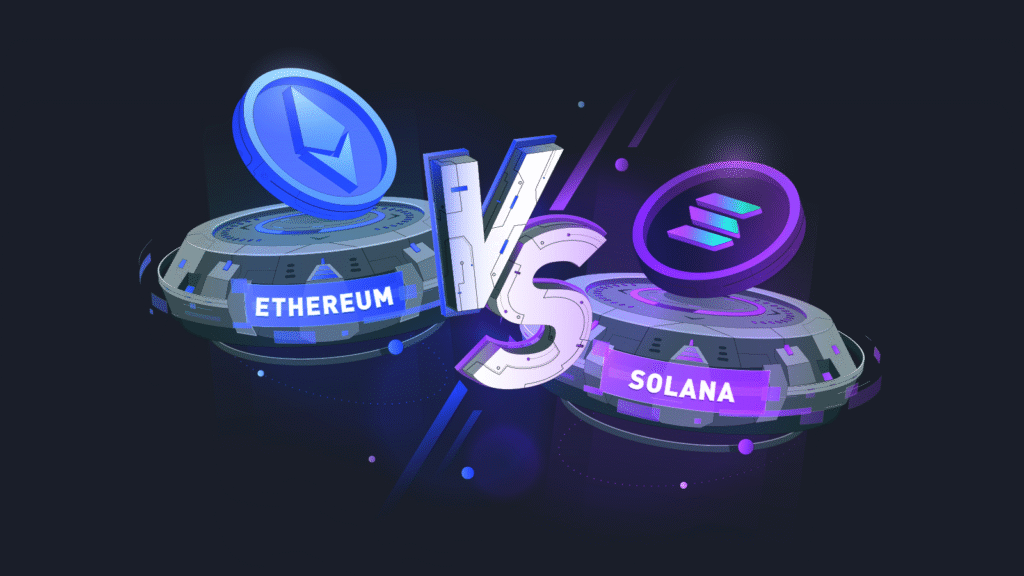For as long as Ethereum has been the undisputed king of smart contracts, a succession of challengers, dubbed “Ethereum Killers,” have vied for its throne. Most have faded into obscurity, but one has proven remarkably resilient, technologically distinct, and increasingly relevant: Solana. After a near-death experience following the collapse of its biggest backer, FTX, Solana has not only survived but thrived, prompting a resurgence of the ultimate crypto question: Is Solana the new Ethereum?

For investors, the answer is no longer a simple “yes” or “no.” The narrative has evolved beyond a zero-sum battle for supremacy. Instead, it has become a fascinating study of two fundamentally different philosophies for building the future of the internet. Understanding this updated comparison is crucial for allocating capital in a maturing digital asset landscape.
The Core Divide: Monolithic vs. Modular
The most significant difference between Solana and Ethereum lies in their core architectural design. This is not just a technical detail; it’s a philosophical choice that shapes their scalability, user experience, and long-term vision.
Ethereum’s Modular Thesis:
Ethereum is aggressively pursuing a modular future. Its strategy is to excel at one thing: being the most secure, decentralized, and reliable settlement layer in the world. It offloads the heavy work of transaction execution to a vibrant ecosystem of Layer 2 (L2) networks like Arbitrum, Optimism, and Polygon.
Think of Ethereum as the central bank of a new financial system. It doesn’t handle every single small transaction itself; instead, it provides the ultimate security and finality for a network of commercial banks (the L2s) that offer fast, cheap services to end-users. With upgrades like EIP-4844 (Proto-Danksharding), Ethereum is actively working to make this L2 ecosystem even more efficient.
- For Investors: Betting on Ethereum is a bet on this modular vision. You are investing in the foundational security layer that underpins a multi-billion dollar ecosystem of interconnected networks. Its strength lies in its decentralization and battle-tested security, making it the preferred platform for high-value DeFi protocols. The risk is potential fragmentation, where liquidity and users are scattered across various L2s, creating a complex user experience.
Solana’s Monolithic Thesis:
Solana takes the opposite approach. It is an integrated or monolithic blockchain. Its goal is to do everything—execution, settlement, and data availability—on a single, hyper-optimized layer. By integrating all functions, Solana aims to provide a seamless, high-performance experience without the need for L2s.
Think of Solana as a single, massively powerful supercomputer designed to handle the entire world’s transactions on its own. It achieves this through unique innovations like Proof-of-History (PoH) for transaction ordering and Sealevel for parallel processing. The upcoming Firedancer client, developed by Jump Crypto, promises to further enhance its capacity and resilience, potentially handling over a million transactions per second.
- For Investors: Betting on Solana is a bet that a single, unified layer will ultimately provide a superior user and developer experience, attracting mass adoption. Its strength is its speed, low cost, and composability—all applications live on the same chain, allowing them to interact seamlessly. The risk has historically been network stability, with several high-profile outages. While improving, Solana must prove it can maintain performance without sacrificing decentralization as it scales.

Ecosystem and Adoption: Where is the Value?
Technology is only half the story. The true measure of a platform’s success is its ecosystem. Here, the two chains exhibit different strengths.
Ethereum’s Blue-Chip DeFi Empire:
Ethereum remains the undisputed leader in Total Value Locked (TVL), the key metric for DeFi activity. It is the home of “blue-chip” protocols like Lido, MakerDAO, and Uniswap. The combined TVL of Ethereum and its L2s dwarfs that of any other ecosystem. It is the trusted platform for high-value transactions and institutional-grade financial products. Its adoption is deep, mature, and financially significant.
Solana’s Retail-Focused Resurgence:
Solana has carved out a niche as the go-to chain for applications requiring high throughput and low latency. It has found remarkable product-market fit in several key areas:
- DeFi for the Masses: Platforms like Jupiter, a trading aggregator, offer a user experience that feels closer to a centralized exchange than traditional DeFi, attracting significant retail volume.
- DePIN (Decentralized Physical Infrastructure): Projects like Helium (decentralized 5G) and Hivemapper (decentralized mapping) have migrated to Solana to leverage its speed and low costs.
- Consumer Applications: From viral meme coins to the innovative Solana Saga phone, the ecosystem excels at building products that target mainstream consumers, not just crypto natives.
The Investor’s Verdict: A Multi-Chain Future
So, is Solana the new Ethereum? No. Solana is the first successful, non-EVM alternative that is forging its own path. It isn’t trying to be a better Ethereum; it’s trying to be a better internet backbone, built on a different set of principles.
For investors, this means the “Ethereum Killer” framework is outdated. The more salient question is not “which one will win?” but “what role will each play in a multi-chain future?”
- Ethereum (and its L2s) represents a more mature, risk-averse investment in the foundational layer of the decentralized economy. It is the digital gold standard for value settlement.
- Solana represents a higher-growth, higher-risk investment in a vertically integrated platform built for mass-market consumer and high-frequency applications. It is a bet on a superior user experience driving the next wave of adoption.
A sophisticated portfolio in 2025 and beyond will likely include exposure to both. Ethereum is the established incumbent evolving into a global settlement layer, while Solana is the high-performance challenger capturing the retail-facing edge of Web3. The real competition is no longer between them, but against the centralized systems they both seek to disrupt. The debate has moved on, and for investors, recognizing this shift is the key to capitalizing on the next chapter of crypto innovation.